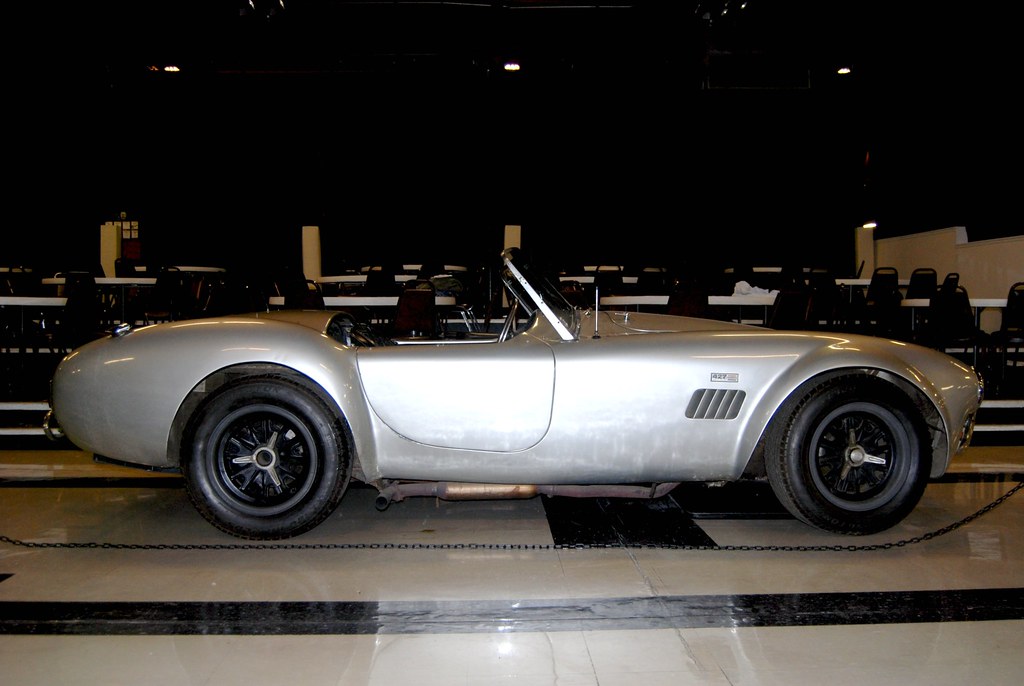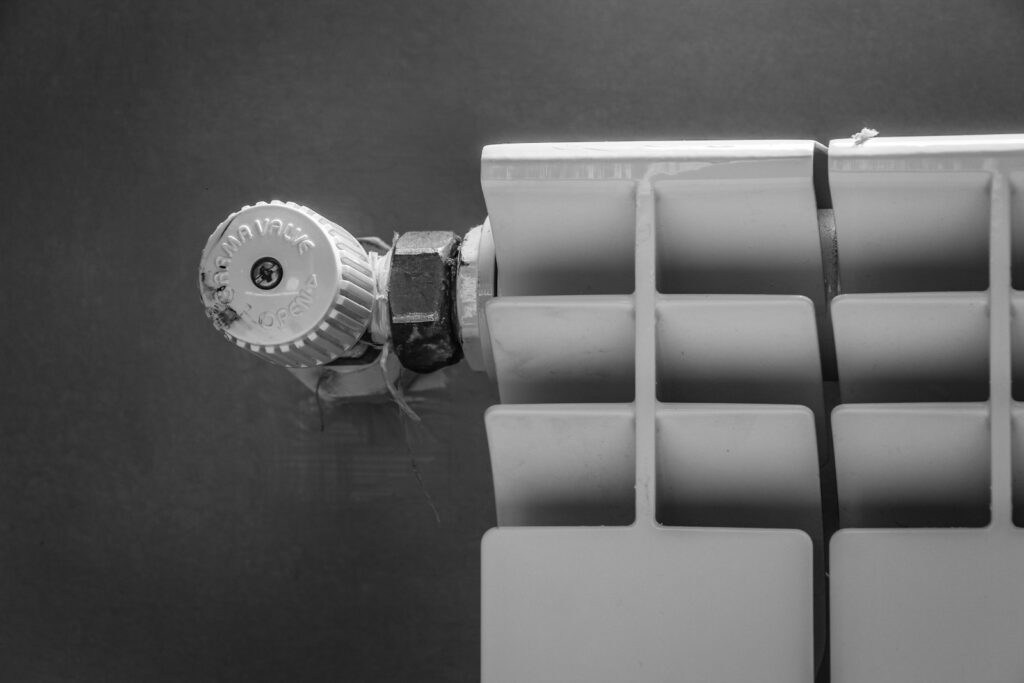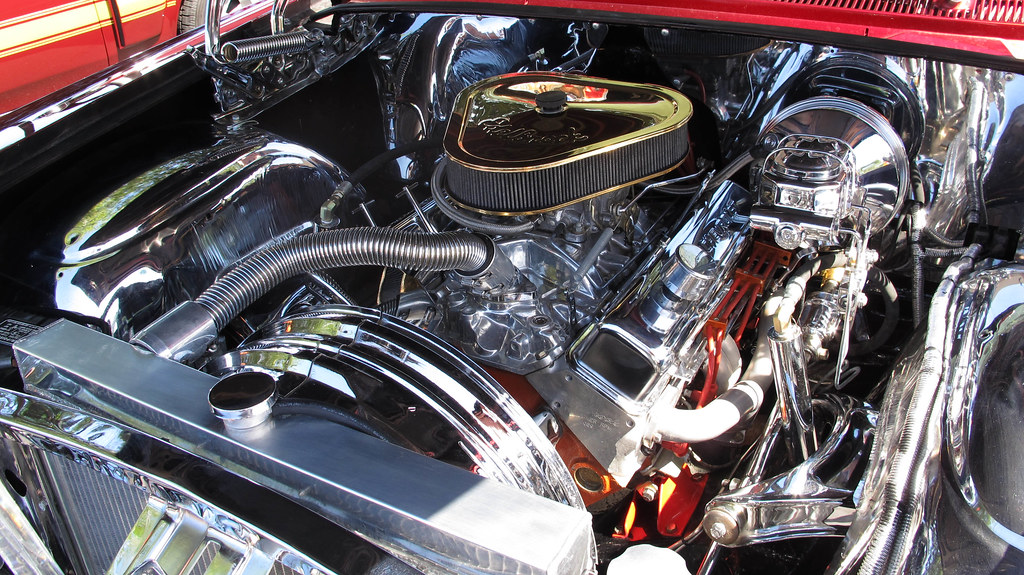
The engine in your vehicle is a marvel of modern engineering, a complex symphony of moving parts generating immense power and, inevitably, immense heat. Managing this heat is the crucial role of your cooling system, a system so vital yet often overlooked or, worse, subjected to misguided practices fueled by pervasive myths. From the casual driver to the weekend warrior, these coolant fallacies can lead to confusion, improper care, and ultimately, costly repairs.
Maintaining your vehicle’s engine coolant system is critical to preventing overheating, corrosion, and costly repairs. Too often, drivers confuse the terms antifreeze and coolant, or assume one product fits all applications. In reality, a high-quality engine coolant blend protects every component of your cooling system—water pump, radiator, cylinder head, and cylinder liners, core plugs, heater core, and the heater tubes that run to and from the heater core. By understanding exactly what goes into modern antifreeze, you can avoid expensive cooling system damage and keep your car running smoothly.
This in-depth guide is designed to cut through the noise, dispelling the most stubborn coolant flush fallacies and cooling system myths that mechanics wish you would stop spreading. We’ll provide evidence-based information and clear, accessible explanations to empower vehicle owners to make truly informed decisions about their coolant needs. Prepare to separate fact from fiction and gain the knowledge necessary to ensure your engine runs smoothly and efficiently for years to come.

1. **The Universal Coolant Illusion: Why One-Size-Fits-All is a Dangerous Myth**The misconception that universal coolants are suitable for any vehicle, regardless of make or model, is one of the most widespread and potentially damaging fallacies in automotive maintenance. These products are often marketed as a convenient, one-size-fits-all solution, tempting drivers with their apparent simplicity. However, beneath the promise of universal compatibility lies a complex reality that vehicle owners ignore at their peril. While such coolants are indeed formulated to be compatible with a wide range of materials and engine types, they are “only sometimes ideal for some vehicles.” This subtle but critical distinction is often lost in translation.
The truth is that different engines may require specific coolant formulations for optimal corrosion protection and heat management. Vehicle manufacturers spend decades and countless resources researching and developing the precise coolant formula for their engines, chemically balancing it for the specific materials used—be it aluminum, cast iron, or brass. A generic “universal” coolant simply cannot account for these nuanced requirements. When a company labels their coolant as “universal,” it often means there’s “nothing in the Universe it’s suitable for,” a blunt but accurate assessment from experts in the field.
The danger intensifies when considering the mixing of different coolants. Many believe that if a coolant is labeled “universal,” it can safely be added to an existing system, even if the existing coolant is a different type. However, “mixing different types of coolant can cause serious problems.” The anti-corrosion additives in a universal coolant can negatively react with the additives already present in your current coolant, leading to a detrimental chemical cascade. This reaction can not only cancel out the protective properties of both coolants but actually “accelerate corrosion” within your engine’s vital components.
Furthermore, the unfortunate outcome of mixing incompatible coolants can manifest in physical changes within the system. “Mixing different coolants can also cause gelling that clogs the small passages in the heater core,” leading to reduced heating efficiency and potentially more severe blockages throughout the cooling system. Universal coolants might not address the specific needs of advanced cooling systems, particularly in newer models or high-performance vehicles, which may need coolants with particular additives to protect against corrosion and wear. Using a non-recommended coolant can lead to chemical reactions that deposit scale and sludge, potentially clogging the cooling system and reducing its efficiency, thus defeating the very purpose of coolant. Always consult your vehicle’s owner’s manual or a professional to understand which coolant is right for your specific model.

2. **The Water Trap: Why Plain Water is a Recipe for Disaster, Not a Quick Fix**The idea that topping up your coolant system with plain water is safe, especially in an emergency, or even that water alone can serve as an effective coolant, is a deeply ingrained misconception. While it’s true that “water is the best coolant” in terms of heat transfer—doing “a better job of transferring heat than any automotive coolant”—this truth comes with a critical caveat. The experts clearly state that this is true “as far as it goes; it does a better job of transferring heat than any automotive coolant.” This statement immediately cautions against oversimplification, emphasizing water’s inherent deficiencies when used in an engine’s cooling system without proper additives.
The primary issue with using plain water is its complete lack of protective additives. Real automotive coolant is a carefully balanced mixture of water, antifreeze, and crucial components like anti-corrosion agents, anti-foaming agents, pH balancers, and water pump lubricants. Water alone contains none of these. While race cars might use plain water for maximum cooling, they don’t worry about corrosion because “they drain the cooling system and rebuild the engine after every race.” This is a luxury not afforded to your family vehicle. Running plain water in a daily driver will inevitably “promote corrosion, causing your radiator, heater core, core plugs, and heater tubing to degrade and leak.” The replacement cost of these components will far exceed the cost of using the recommended coolant.
Beyond corrosion, the mineral content in tap water poses another significant threat. “Adding water to your coolant system can dilute its effectiveness, particularly if you’re using hard water, which is high in minerals.” These minerals don’t just disappear; they “can deposit inside the radiator and cooling channels, leading to scale buildup that can impede coolant flow and heat transfer.” This buildup acts as an insulator, reducing the cooling system’s ability to dissipate heat and potentially leading to overheating, even if the system appears full.
Diluting the precisely formulated coolant mixture with additional water, particularly undistilled water, disrupts its chemical balance. This not only diminishes the anti-corrosion properties but also lowers the coolant’s boiling point and raises its freezing point, making the engine vulnerable to both overheating and freezing damage. In an emergency, using distilled water is “safer than using tap water, as it doesn’t contain minerals that might cause scaling.” However, this should always be considered a temporary solution, and the correct coolant-to-water ratio should be restored “as soon as possible by adding the appropriate coolant.” The ultimate lesson is clear: “water should never be used without antifreeze” in a conventional cooling system to ensure comprehensive protection.

3. **The “Looks Clean” Deception: Why Coolant Degradation is an Invisible Threat**One of the most insidious myths circulating among vehicle owners is the belief that if coolant doesn’t appear dirty or contaminated, it doesn’t need to be replaced, or that it simply “lasts forever” and “never needs to be flushed.” This visually-driven assumption can lead to critical oversights in vehicle maintenance, as the effectiveness of coolant extends far beyond its color or clarity. The reality is that “coolant degradation is not always visible,” and its chemical integrity deteriorates over time, regardless of its pristine appearance.
The core of this fallacy lies in misunderstanding what makes coolant effective. While the base chemical, ethylene glycol, “never wears out,” there’s a significant catch. “Engine overheating degrades ethylene glycol, causing it to oxidize and break down.” When overheated, “glycol loses its protection against freezing and boiling.” But even without extreme thermal stress, the essential additives within the coolant—the very components responsible for anti-corrosion, anti-foaming, and pH balancing—do wear out. These additives are consumed as they perform their protective duties, slowly diminishing their capacity to safeguard your engine.
The chemical properties, such as the pH level and the concentration of crucial corrosion inhibitors, “can change over time, regardless of the coolant’s appearance.” Once these anti-corrosion additives are depleted, a process known as galvanic action begins. This destructive process leads to system corrosion that can severely damage vital components such as the “water pump, radiator, heater core, and tubing, core plugs, and cylinder liners.” The gradual nature of this chemical breakdown means that by the time visible signs of corrosion or fluid contamination appear, significant damage may already be underway.
Therefore, “regularly scheduled changes, as the vehicle manufacturer recommends, ensure that the coolant maintains its chemical integrity and protective qualities.” Flushing coolant removes contamination that can cause engine overheating. “The frequency with which you should change your coolant depends on the manufacturer’s recommendations and the type of coolant used.” Traditional green IAT coolants might need changing every “2 years or 30,000 miles,” while modern extended-life OAT and HOAT coolants can last “5 years or up to 150,000 miles.” Adhering to these schedules is not just a recommendation; it’s a proactive measure against expensive future repairs, ensuring your engine’s long-term health.

4. **The Color Code Confusion: Why Coolant Hues Are More Than Just Aesthetics**A common misunderstanding in automotive circles is the belief that the color of coolant is purely for aesthetic purposes and has no bearing on its type or quality. Many drivers might assume that as long as the color matches, or if it simply looks “green” or “orange,” it’s the correct coolant for their vehicle. This misconception is not only incorrect but can lead to significant engine issues, as coolant colors are deliberately used by manufacturers to signal distinct chemical formulations and additive packages.
The reality is that “coolant colors are actually used by manufacturers to indicate different chemical formulations.” These colors act as a visual shorthand for the underlying technology. For instance, “green typically denotes an inorganic additive technology (IAT) coolant, which is suitable for older vehicles.” These IAT coolants often contain silicates and phosphates and have a relatively shorter service life. Conversely, “orange indicates an organic acid technology (OAT) coolant used in many modern cars,” which are known for their extended life and different protective chemistries, often featuring carboxylic acids.
The danger of ignoring these color distinctions and the chemical formulations they represent is substantial. “Using the incorrect type of coolant based on color alone can lead to significant engine issues, such as corrosion and scaling.” Mixing incompatible coolants, even if they appear to be the same color (though different brands may vary their dyes), can cause adverse chemical reactions. As mentioned previously, mixing can result in gelling, precipitation of additives, or accelerated corrosion, all of which compromise the cooling system’s integrity and efficiency.
Therefore, it is “crucial to consult the vehicle’s owner’s manual or a professional to understand which color and coolant is right for your vehicle model.” The type of coolant, indicated by its specific chemical base (IAT, OAT, HOAT, etc.), is paramount, not just its visual shade. Each formulation is designed to protect specific engine materials and seals, and a mismatch can lead to expensive damage to the radiator, water pump, and engine block. Understanding these color codes as indicators of chemical technology is vital for correct coolant selection and long-term engine health.

5. **Beyond the Freeze: Why Antifreeze is Essential, Even in the Hottest Climates**The notion that antifreeze is only necessary to prevent coolant from freezing in winter, implying that vehicles in warmer climates like Nigeria don’t require it, is a persistent and dangerously narrow misconception. This belief overlooks the multifaceted role that antifreeze plays in a vehicle’s cooling system, extending far beyond simply preventing ice formation. Understanding its full function is critical for vehicle owners, regardless of where they live.
The reality is that “antifreeze does more than just prevent coolant from freezing; it also raises the coolant’s boiling point, which is crucial for preventing overheating.” This is a vital function often forgotten by those who associate antifreeze solely with cold weather. Engine combustion and friction generate extreme heat, and without antifreeze, the water component of the coolant would boil rapidly, turning to steam. Steam is a poor heat transfer medium compared to liquid, leading to a rapid rise in engine temperature and potentially catastrophic overheating.
Furthermore, antifreeze formulations contain essential “corrosion inhibitors that protect the engine, radiator, and other components from corrosion.” Plain water, as discussed, is a primary source of corrosion, and even in warm climates, the intricate metal components of an engine and cooling system are highly susceptible to galvanic action and chemical degradation. These inhibitors form protective layers on metal surfaces, preventing rust, pitting, and the breakdown of materials, thereby extending the lifespan of the entire cooling system.
Therefore, “even in hot climates, the cooling system is subjected to extreme temperatures that can cause the coolant to boil.” Antifreeze is indispensable to “ensure that the coolant remains effective under all temperature conditions and protects the engine against corrosion.” A 50/50 mix of ethylene glycol and water, commonly recommended, will protect your cooling system down to “-34F” while also significantly elevating the boiling point to withstand intense engine heat. So, whether you’re navigating sub-zero winters or scorching summers, antifreeze is a year-round guardian for your engine’s health.

6. **The Thermostat Deception: Why Removing It Will Only Add Insult to Injury**Among the most misguided cooling system myths is the belief that removing your engine’s thermostat in hot weather will help eliminate overheating. This fallacy stems from a seemingly logical, but ultimately incorrect, assumption that a constantly open system will allow for maximum cooling. However, experts are clear: “This will only add insult to injury!” and “Never operate your engine without a thermostat!” The thermostat is not an impediment to cooling; it is a precisely engineered regulator essential for optimal engine operation.
The thermostat’s primary role is to “maintain the engine at an optimal temperature by controlling the flow of coolant.” When the engine is cold, the thermostat remains closed, allowing the engine to warm up quickly to its ideal operating temperature range, typically “180- to 210-degree F.” Once this temperature is reached, the thermostat opens, allowing coolant to circulate through the radiator to dissipate heat. Without a thermostat, the coolant flows continuously, often too quickly, through the system. This rapid flow prevents the coolant from spending enough time in the radiator to effectively give up its heat to the atmosphere.
The consequence of removing the thermostat is counterintuitive but critical: “When coolant never has a chance to give up heat via the radiator, it gets hotter and hotter, especially if you’re stuck in traffic.” Even on the open road, “coolant never has a chance to park in the radiator long enough to give up heat energy to the atmosphere.” This leads to an engine that can still overheat, even with seemingly continuous coolant circulation. Furthermore, removing the thermostat causes another problem: “it can cause the engine to run below its optimal temperature.”
Running an engine below its optimal operating temperature might sound benign, but it leads to a cascade of negative effects. A colder engine operates less efficiently, resulting in “lowering gas mileage and causing carbon buildup in the cylinder.” Modern computer-controlled vehicles are especially sensitive to thermostat operation; they rely on specific temperature ranges for fuel injection timing and emissions control. Disrupting this balance by removing the thermostat can lead to decreased performance, increased wear, and potentially trigger check engine lights. Proper thermostat selection is crucial, with 180-degree F thermostats recommended for classic vehicles and 192- to 195-degree F thermostats for late-model computer-controlled vehicles, ensuring the engine stays within its designed temperature window.

7. **The “Freeze Plug” Fallacy: Unveiling the True Role of Core Plugs**A deeply rooted misconception among vehicle owners is the belief that “freeze plugs” are specifically designed to pop out and save your engine block from cracking if the coolant freezes. This sounds like a clever engineering safeguard, offering a sense of security against the destructive forces of expanding ice. However, experts are quick to correct this fallacy, emphasizing that relying on these components for freeze protection is a dangerous oversight that can lead to catastrophic engine damage.
The truth is, the term “freeze plugs” itself is a misnomer. These components are actually called “core plugs,” and their sole purpose is fundamentally different from what the common name suggests. As Rick Muscoplat explains, “They exist for ONLY ONE REASON. Core plugs are used to plug holes in the engine that are created during the casting process.” These holes are critical during manufacturing, allowing the engine builder to remove casting sand from the intricate coolant passages, ensuring a clean and unobstructed cooling system before final assembly.
While core plugs do seal the cooling system, they are not designed as sacrificial components for freezing conditions. If your coolant mixture is too weak to withstand freezing temperatures, the immense pressure exerted by expanding ice within the engine block will almost certainly cause the block to crack long before a core plug pops out. Muscoplat vividly illustrates this point, stating, “I’ve seen dozens of cracked blocks with the core plugs still in place.” This stark reality underscores that a properly mixed coolant is the only reliable defense against freeze damage, not the core plugs. He unequivocally warns, “NEVER rely on a core plug to prevent engine freezing.”
Therefore, understanding the true function of core plugs is essential for proper engine care. They are vital for the manufacturing integrity of the engine but offer no protection against freezing damage. The real safeguard against engine freezing lies in maintaining the correct coolant-to-antifreeze ratio as recommended by your vehicle manufacturer, ensuring your engine block remains intact through all temperature extremes.

8. **The Misunderstood Anti-Collapse Spring: Essential for Older Systems**Another curious fallacy that persists, even among some hose manufacturers, is the idea that the anti-collapse spring in the lower radiator hose is either unnecessary or was only used for factory-fill purposes. This overlooks a critical engineering detail designed to prevent a specific and potentially damaging issue in conventional cooling systems, particularly in older vehicles. Dismissing its role can lead to reduced cooling efficiency and unnecessary strain on vital components.
The reality is, for older vehicles equipped with conventional cooling systems, an anti-collapse spring in the lower radiator hose is absolutely essential. Jim Smart explicitly states, “you must have an anti-collapse spring in the lower radiator hose if you have an older vehicle with a conventional cooling system.” Its presence isn’t an arbitrary design choice; it serves a crucial mechanical function related to the dynamics of coolant flow and pump operation.
During high engine RPM, the water pump, which is responsible for circulating coolant, can create a powerful suction or “negative pressure” within the lower radiator hose. Without the support of the internal anti-collapse spring, this negative pressure can cause the hose to literally collapse inward. A collapsed hose severely restricts coolant flow to the water pump and engine, leading to a drastic reduction in cooling efficiency and potential overheating, especially under demanding driving conditions.
Jim Smart clarifies the misconception that it was only for factory-fill, stating, “This has never been true because of the positive pressure on the lower hose during fill.” The primary role of the spring is dynamic, responding to the negative pressure created by the pump. If you’ve ever experienced your engine overheating on the highway but maintaining normal temperatures in town, a missing or weakened anti-collapse spring could very well be the culprit. Always ensure your vintage vehicle’s lower radiator hose is equipped with a robust stainless or galvanized steel anti-collapse spring to guarantee proper coolant flow and prevent unwanted hose collapse.

9. **Fan Speed vs. Effectiveness: Why Faster Isn’t Always Better**When it comes to cooling fans, a common intuitive leap is that the faster a fan turns, the better it will cool the radiator. This belief often leads enthusiasts to seek out fans promising extreme RPMs, assuming a direct correlation between speed and superior heat dissipation. However, automotive cooling experts reveal that this isn’t “completely true,” and an overly fast fan can actually work against optimal cooling under certain conditions.
For effective heat transfer, the air needs to move across the radiator’s fins and tubes at a controlled velocity, allowing enough time for the heat to be absorbed and carried away. As Jim Smart explains, at high fan speeds, you can encounter “boundary layer issues where heat doesn’t get carried away because air isn’t actually touching fins and tubes.” This phenomenon occurs when air moves so rapidly that it essentially glides over the surfaces, rather than intimately contacting them to draw away heat. The goal is for air to “move slowly enough across fins and tubes to where it carries heat away.”
Furthermore, a fan’s necessity changes dramatically with vehicle speed. “At speeds above 40 miles per hour your engine doesn’t need a cooling fan” because the vehicle’s forward motion, or “radiator slipstream,” becomes powerful enough to push sufficient air through the radiator for cooling. This is precisely why sophisticated cooling systems, such as those employing a thermostatic clutch fan or an electric fan, are most effective. These systems engage only when necessary, optimizing airflow at low speeds or when idling, and allowing the fan to free-wheel or turn off at higher speeds, reducing parasitic drag on the engine and ensuring proper heat exchange without boundary layer issues. Thus, choosing the right fan system based on application, rather than simply chasing maximum speed, is paramount for efficient engine cooling.

10. **The “More Fans, More Cooling” Myth: Quantity Doesn’t Guarantee Quality**Extending the logic of fan speed, another prevalent misconception is that installing “more fans are better” when it comes to cooling an engine. Drivers might assume that doubling up on fans, perhaps placing one in front and one behind the radiator, or simply adding multiple smaller fans, will inherently provide superior cooling capacity. Yet, this belief also falls into the trap of oversimplification, as the effectiveness of a cooling system is more about intelligent design than sheer quantity.
Jim Smart cautions that this notion “isn’t completely true, either.” In fact, an excess of fans can sometimes be counterproductive or indicate a deeper, underlying issue within the cooling system. Ideally, a single, properly sized, and positioned fan should be sufficient for the vast majority of applications. As Smart points out, “You don’t really need a fan both behind and in front of the radiator.” A well-engineered single fan, typically located behind the radiator, can provide ample cooling capacity, especially when combined with proper shrouding.
The real effectiveness of a fan system hinges on how efficiently it pulls or pushes air through the entire radiator core. If a vehicle genuinely requires two cooling fans to maintain proper temperature, “there’s a deeper problem than fan capacity.” This suggests that issues like an undersized radiator, restricted coolant passages, or other system inefficiencies are at play, which multiple fans alone cannot resolve. Instead of adding more fans, it’s often more beneficial to ensure existing fans are optimally shrouded, properly spaced, and designed to work in conjunction with the radiator to vector air velocity through the core effectively. Paying close attention to factory designs often reveals the most efficient fan configurations, proving that quality and strategic placement trump sheer numbers.

11. **The Radiator Cap’s Hidden Power: Why Pressure Matters**Many vehicle owners tend to overlook the radiator cap, viewing it merely as a simple lid to prevent coolant from spilling. This casual disregard for such a seemingly minor component is a significant fallacy, as the radiator cap plays a remarkably sophisticated and critical role in the entire cooling system’s performance. Its design, specifically its pressure rating, is fundamental to preventing overheating and ensuring the engine operates within its intended temperature range.
The truth is, the radiator cap is much more than a seal; it’s a precisely engineered pressure valve. As Jim Smart explains, “Your coolant is under pressure to keep the boiling point as high as possible.” Water’s natural boiling point is 212 degrees Fahrenheit (100 degrees Celsius), but an engine can easily reach temperatures far exceeding this during operation. The pressurization created by the radiator cap dramatically elevates the coolant’s boiling point, allowing the system to operate at much higher temperatures—such as “240 degrees Fahrenheit”—without the coolant turning to steam.
Steam is a poor heat transfer medium compared to liquid coolant, and its formation leads to rapid overheating. By maintaining system pressure, the cap ensures the coolant remains in its liquid state, efficiently carrying heat away from the engine. Therefore, selecting the correct radiator cap pressure rating is crucial. Smart advises, “you want the highest pressure cap rating suitable for your application.” Caps for older vehicles typically range from “7-12 pounds,” while newer, computer-controlled vehicles often require caps rated between “12-18 pounds.”
An incorrect or faulty radiator cap—one with a weak spring or a damaged seal—will fail to maintain adequate pressure, causing the coolant to boil prematurely and leading directly to overheating. Regular inspection of the radiator cap for rust, a functioning spring, and an undamaged rubber gasket is therefore an indispensable part of routine cooling system maintenance, ensuring your engine’s delicate thermal balance is consistently upheld.

12. **The Costly Illusion of “Cheap”: Investing in Quality Cooling Components**In the realm of automotive maintenance, the adage “you get what you pay for” holds particular weight, yet many drivers fall prey to the fallacy of “Cheap is Cool.” The temptation to save a few dollars by opting for the cheapest available replacement parts for the cooling system—hoses, water pumps, thermostats—is strong. However, this seemingly economical choice often turns out to be a false economy, leading to premature failures, costly repairs, and significant inconvenience down the road.
Cooling system components operate under extreme conditions of heat, pressure, and constant fluid circulation. Inferior quality parts are simply not built to withstand these stresses for extended periods. As Jim Smart emphasizes, when replacing critical components, “don’t do it on the cheap. Spend good money on the best components and sleep better.” Investing in high-quality parts from reputable brands ensures better durability, reliability, and ultimately, peace of mind.
Consider radiator hoses, for instance. High-quality hoses like “Goodyear Super Hi-Miler” are engineered to last longer and resist degradation from coolant chemicals and engine heat, especially when secured with “high-quality worm gear clamps.” Similarly, for water pumps, while a variety exist, always “opt for a high-flow water pump and be mindful of pulley ratio (pump speed)” to ensure efficient coolant circulation. The thermostat, as previously discussed, is a precision component, and a cheap, inaccurate one can disrupt the engine’s temperature regulation, causing either overheating or inefficient cold running.
The repercussions of using cheap, subpar cooling system components can manifest as unexpected leaks, a burst hose, a seized water pump, or an engine that constantly runs too hot or too cold. These failures not only strand you but also frequently lead to more extensive and expensive damage, such as a blown head gasket or a cracked engine block, far exceeding the initial savings. Therefore, prioritizing quality in cooling system components is not just a recommendation; it’s a wise investment in your vehicle’s long-term health and your own financial well-being.
As we’ve journeyed through these persistent coolant myths, it’s clear that proper vehicle maintenance is less about guesswork and more about informed decision-making. From understanding the true function of core plugs to recognizing the subtle yet significant role of a radiator cap, each fallacy debunked illuminates a path toward better engine health. The intricate dance of heat transfer and corrosion protection within your cooling system demands respect for engineering principles and an unwavering commitment to manufacturer guidelines.
Read more about: Transform Your Home: Simple Backyard Projects That Instantly Boost Your Curb Appeal
Armed with this evidence-based knowledge, you are empowered to make choices that will safeguard your engine, prevent costly repairs, and ensure your vehicle runs smoothly and efficiently for years to come. Remember, when in doubt about the specific coolant for your vehicle or the nuances of cooling system maintenance, the most reliable course of action is always to consult with experienced professionals. They possess the expertise and tools to provide accurate guidance, ensuring your cooling system, and indeed your entire engine, receives the care it truly deserves. After all, a healthy cooling system is the heart of a happy engine, ready to tackle any road ahead.



